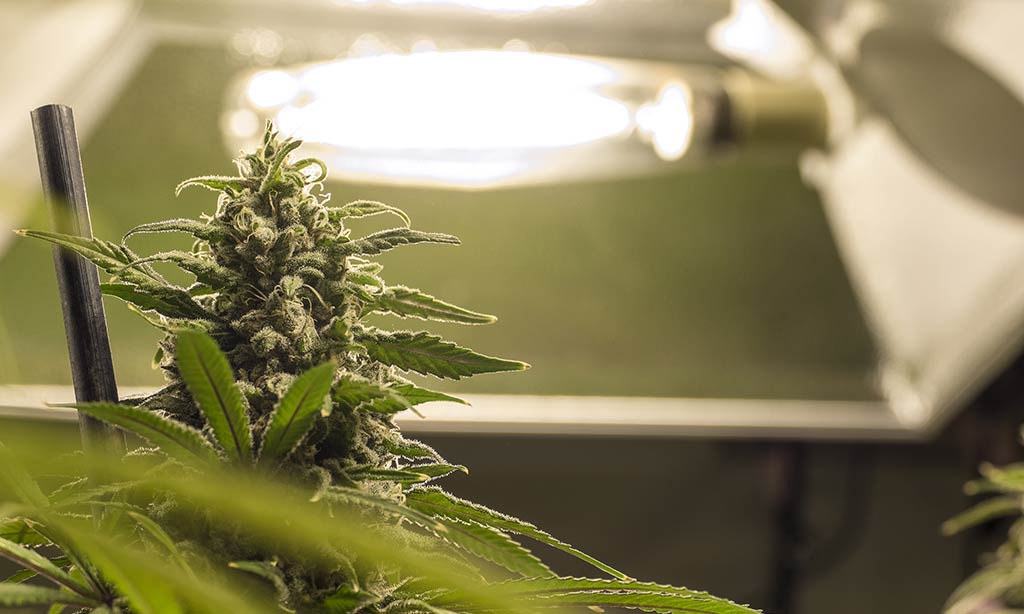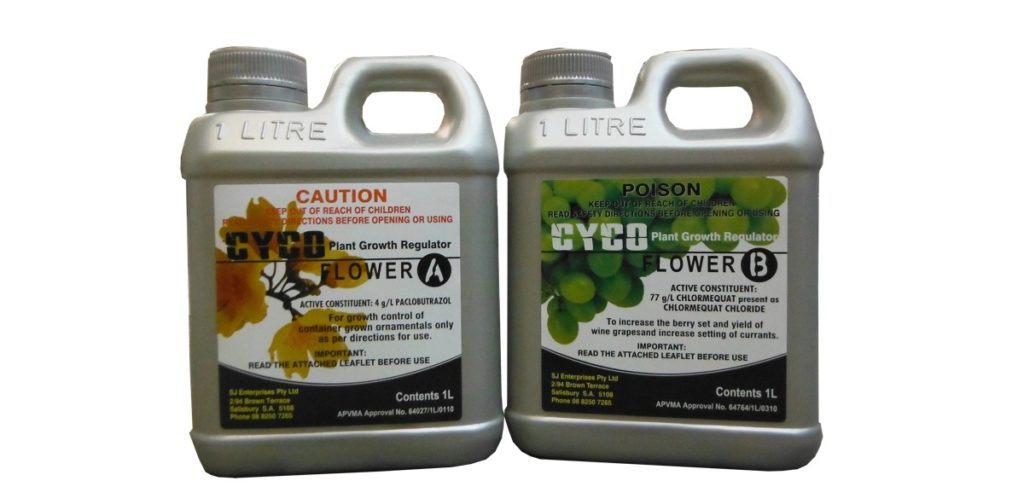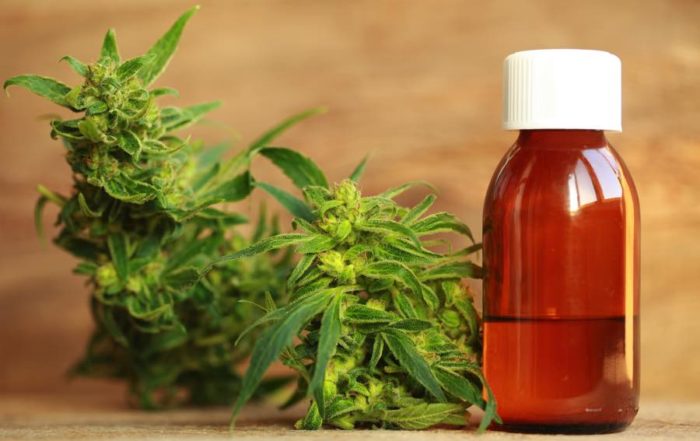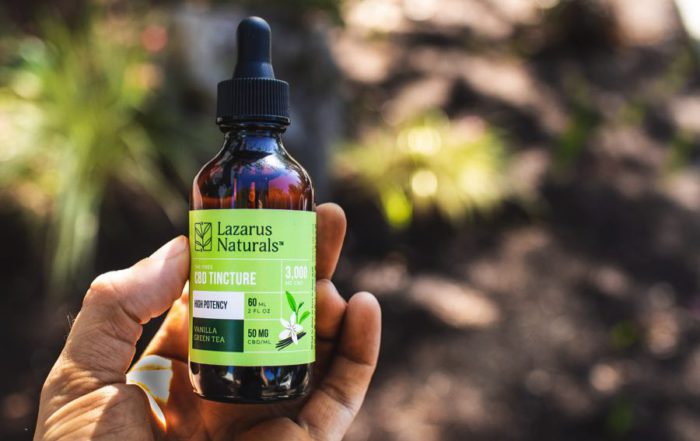Over the past few years we have seen an exponential increase in public awareness related to PGRs and even ways to identify suspected buds. This increased awareness is a fantastic sign that we are progressing as a community. However, there is still a lot of misinformation circulating about PGRs as well as a lack of scientific understanding around how they work. I will attempt to outline the major PGRs used in cannabis production and how they affect your body.

Paclobutrazol
Paclobutrazol ( PBZ) is a plant growth retardant (usually used in the vegetative cycle onwards) and works via being a giberellic acid (GA3) antagonist. For the science buffs out there, it’s a competitive inhibitor with irreversible binding to the iron core of the three enzymes involved at different stages in the synthesis of gibberelins. However, the takeaway message for the average person is that it stops the plant functioning in a normal manner by shutting down the following enzymatic pathways:
- Terpene synthases
- Cytochrome P450 mono-oxygenases (P450s)
- 2-oxoglutarate–dependent dioxygenases
What is important to note is that PBZ shuts down the terpene synthases, which will bottleneck two other pathways critical to the production of (good) cannabis:
- Terpene synthase pathway
- THC synthase pathway
The inhibition PBZ causes greatly diminishes the plant’s ability to produce THC, due to the fact that THC’s base organic building block is geranyl diphosphate, one of the first products produced by the terpene synthase pathway. In essence this means that PBZ severely diminishes the plant’s ability to produce THC and terpenes (variably depending on the concentration of the PGRs used). This explains why PGR buds have little to no terpenes, and little THC. (Admittedly the drying and curing process affects the terpene content also.)

The effect of PBZ further manifests itself (via inhibiting the above enzymes) by ultimately causing the plant cells to divide, but not to elongate (which giberellic acid normally does) and as a result the flowers will be more dense and have smaller calyxes, and thus appear to have more pistols (aka rock hard bud with hairs for days). With that being said, PBZ will only increase the density of a strain comparatively. Some strains are naturally very dense and could even be more dense than a bud with PGRs, if the PGR strain is generally not a dense one. For this reason it’s best to use multiple criteria when trying to determine if the bud has PBZ in it.
Finally giberellic acid is responsible for inducing trichome formation. Therefore no GA3 means no trichomes. Thus the explanation as to why PGR buds have less or no trichomes (again variable depending on the concentration of the PGRs used),.
In terms of its health effects it is deemed a carcinogen according to the California EPA and the Massachusetts EPA as well as a developmental disruptor.
- The combustion of PBZ can cause its breakdown products to form nitrosamines (the most carcinogenic component in cigarettes), and is also found to induce ballooned hepatocytes (i.e. your liver cells swell up) as well as causing P450 enzyme induction (extreme stress on your liver)
- PBZ has been linked to the disruption of spermatogenesis in mammals
- PBZ has been linked to liver damage
Daminozide
Daminozide AKA alar is usually used in the flower mix and is another antagonist, but to abscisic acid instead of GA3. There aren’t a lot of visual effects caused by alar except for odd colouration of the buds due to excess amounts of phytyl (a precursor to chlorophyll) accumulating. This is another thing to add to the list of things to look out for, and explains why PGR buds tend to be brown-green on the surface.
In terms of health effects though, the thing to take away from alar is that it breaks down into a nasty little product called
unsymmetrical dimethylhydrazine
(UDMH).
- This molecule is a known carcinogen and it is of more concern because the chemical alar is applied in a foliage spray, sprayed onto the plant leaves and buds, and so it is on the surface of the plant and in prime position for atomisation when combusted
- There has been dispute over the ability of alar to actually cause cancer given the exposure dose needs to be very high. However, in 1989 the EPA banned alar for food crops and said that “long-term exposure posed an unacceptable risk to public health”.
Chlormequat Chloride
Chlormequat Chloride is the final PGR common in flowering mixtures.
This is a plant growth regulator that inhibits the synthesis of GA3 in a similar way to PBZ, and therefore many of the effects caused by it are similar to PBZ’s (in terms of identifying bud) and similarly, it causes a myriad of problems much like PBZ (though likely through different mechanisms).
- It is known to impact on mammalian fertility
- It also related to developmental toxicity effects and to reproduction problems
These are the currently known effects of the three commonly used PGRs in commercial growers’ veg and flower mixtures.
Further reading:
sepro.com/documents/profile_article.pdf
ncbi.nlm.nih.gov/pmc/articles/PMC34957/
ncbi.nlm.nih.gov/pubmed/22789407
fao.org/docrep/w8141e/w8141e0k.htm
wikipedia.org/wiki/Gibberellin#Biosynthesis
—
Read more about PGRs and their role in growing flowers in this book by gardener Vaghasiya Mital, whichyou can buy online here.






Leave A Comment